Text

10 notes
·
View notes
Text
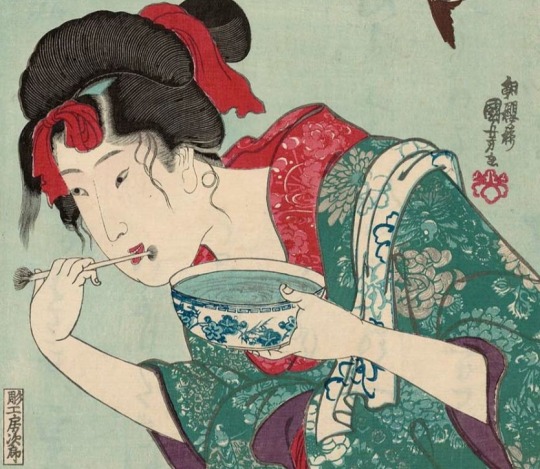
+ What were toothbrushes like in the Edo period?
Upper-class people (court aristocracy, priests, and warlords) began cleaning their teeth using tooth twigs during the Heian period.
This custom didn't spread among the common people until the middle of the Edo period when fusayouji (tufted toothpicks made from willow or spicebush) were invented. Fusayouji were made by smashing the end of a twig with a wooden hammer, and combing out the fibers with a needle brush.
Fusayouji and tooth powders became widespread after they started being sold at a toothpick shop on the grounds of Sensoji temple, where a beautiful girl attracted customers. Those customers included Tokugawa Iemitsu, the third Tokugawa shogun, who was said to have rested at the shop during his visit to the temple. Instant fame for the shop and a run on its tooth care products followed, after which other establishments began selling the same.
+ What are tooth powders?
Tooth powders were introduced to Japan from Korea at the beginning of the Edo period. Previously, people used salt or rice bran to clean their teeth.
Tooth powders quickly caught on among the young men of Edo who boasted of their white teeth and brushed diligently. It was easy to tell a true Edokko (Edo native) from a country bumpkin by whether or not he used tooth powder.
In the Bunka-Bunsei period (1804-1830), more than one hundred types of tooth powder were sold in Edo. They were made from boushuzuna (fine-grained sand) to which other substances, such as borneol, clove and cassia, were added for flavor and appearance. High-end tooth powder flavored with musk and colored pink was a specialty item of Edo.
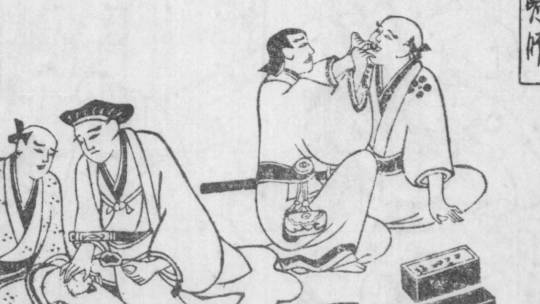
+ How were toothaches treated in the Edo period?
Dentistry became its own specialty during the Heian period and focused on treating teeth and gums, as well as ailments of the tongue and throat. Dentists primarily treated people of means, such as court aristocrats and samurai.
During the Edo period, a second specialty, denturists, came into existence. They treated the common people and provided services such as treating toothaches and gum infections, pulling teeth, and making dentures.
Toothache remedies were made from clove, pepper, alum, and other substances, and were widely sold by denturists and street vendors.
+ How were teeth pulled during the Edo period?
Dentists and denturists of the Edo period used a variety of methods to pull teeth, including grasping the tooth with a plier-like tool or using a wooden bar tapped with a hammer.
An analgesic was commonly applied to the gums to numb them prior to dental work, but tooth extractions were said to have been performed with lightning speed, so the analgesic wasn't always necessary.
+ Were there dentures in the Edo period?
The oldest wooden dentures in Japan belonged to a nun (and former princess) called Hotokehime, who died in 1583 in Wakayama City.
Denturists as a profession came into existence during the Edo period, less than a century later. They made wooden dentures by taking an impression in beeswax and then carving the dentures from wood to fit that shape. Artisans who previously carved netsuke or Buddhist statues often became denturists.
The oldest set of Edo period dentures surviving today were made for Yagyu Matajuro Munefuyu, one of the Tokugawa's Edo sword instructors. (Readers of this tumblr may find the name familiar, he's Samon's brother.) Munefuyu's dentures were carved from boxwood and had teeth made from soapstone, making them look very realistic. (There's a picture here.)

+ Did all women blacken their teeth in the Edo period?
During the Edo period, tooth blackening was practiced almost exclusively by court aristocrats and married women. In 1868 and 1870, bans on teeth blackening were enacted targeting the nobility, but the custom continued until the Emperor Meiji and Empress Shoken set the example.
---
Information in this post adapted mostly from this page.
#shared#research#reference#history notes#historical notes#history research#historical research#history reference#historical reference#teeth#dentist#denturist#dentures#toothpaste#toothbrush#tooth care#dental care#edo period#edo period Japan
16 notes
·
View notes
Text
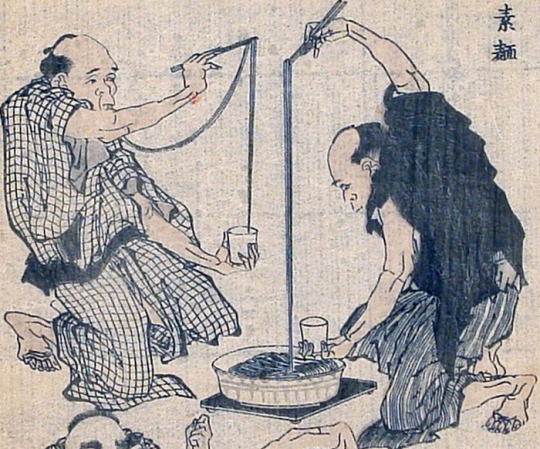
(Hokusai - Hokusai Manga Vol. 12, Men eating Noodles)
I recently came across the paper "Ancient DNA analysis of food remains in human dental calculus from the Edo period, Japan" by Sawafuji et al. (2020).
Researchers extracted DNA from dental calculus - that's the white stuff that forms on your teeth over time (and is generally removed if you go in for cleanings) - to study what people in the mid- to late-Edo period ate. To do this, they sampled calculus from 13 bodies dating to the 18th and 19th Century: 7 women and 6 men who lived in the city of Edo.
They found that they were unable to identify any type of animal taxon in the samples, so we don't know which fish or meats, if any, were eaten by the sampled individuals. So, not helpful in that regard.
However, they were able to identify the following:
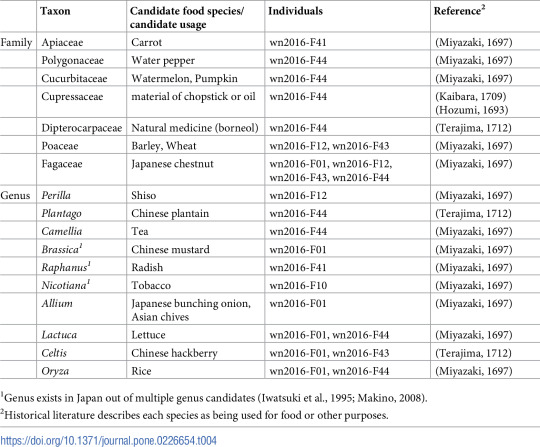
We already know (and the paper points this out as well) that the diet of Edo's townspeople primarily consisted of rice and vegetables, occasionally (or regularly, depending on your means) accompanied by various types of fish.
From the list above, we can then identify a few more of the ingredients these specific people ate: rice, as their main staple, but also soba or udon (made from wheat and barley). An assortment of different vegetables, such as carrots, chestnuts, shiso, and garlic chives. And tea, naturally.
Interestingly, the researchers also found some non-food items, specifically plant matter from the Cupressacea (cypress) family, borneol and tobacco.
Tobacco is perhaps self-explanatory: many people in Edo smoked (pipes, specifically), and it would be fair to say that this left some residue in their dental calculus.
Plant matter from the cypress family is more interesting. There are two types of trees native to Japan from that family, the Japanese cedar and the Japanese arborvitae, the kind of smallish conifer that grows all over Japan. This plant matter is most likely to get into peoples' mouths by using chopsticks and toothpicks made from those trees, but also by using the resin as a painkiller for toothaches.
And the borneol stands out because it comes from a tree called the Borneo camphor, which isn't native to Japan and also won't grow in Japan if you tried. Meaning that the borneol would have to be imported, which it had been for a few hundred years, from China.
People examined in this study most likely came into contact with borneol as a flavoring in tooth powder. Tooth powder at the time was primarily fine sand with added flavoring to, I suppose, improve the experience and set apart different "brands" sold in stores.
You can learn more about tooth powders, tooth brushes, and treating toothaches in the Edo period on the website of the Kanagawa Prefectural Dental Association (in English).
Additionally, borneol was used in many traditional kampo medicines in both Japan and China. I'm not very well versed in kampo medicines, but according to this website, it's used to aid the digestive system by stimulating the production of gastric juices, treat bronchitis, coughs and colds, relieves pain and reduces swelling, and can be taken as a tonic to promote relaxation.
8 notes
·
View notes
Text
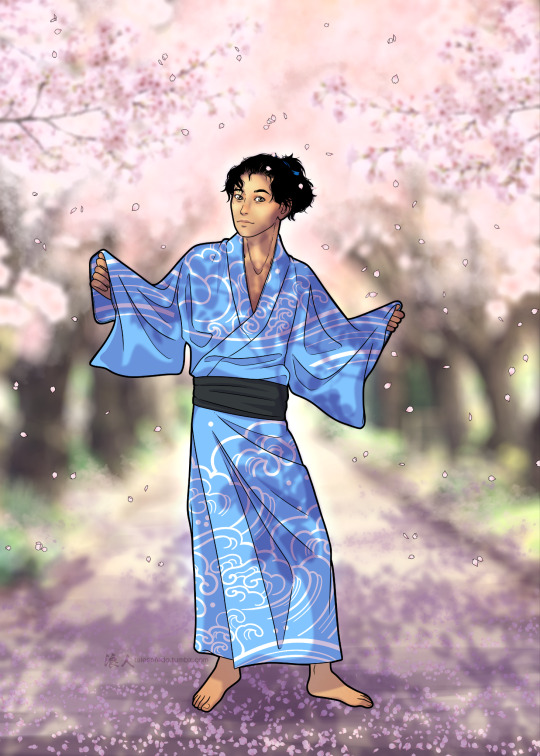
9 notes
·
View notes
Text

23 notes
·
View notes
Text

Teacher and student.
15 notes
·
View notes
Text

9 notes
·
View notes
Text

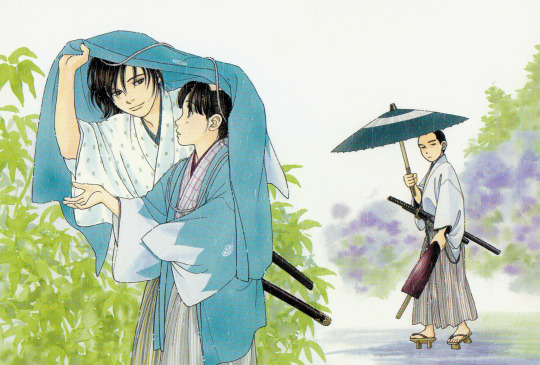


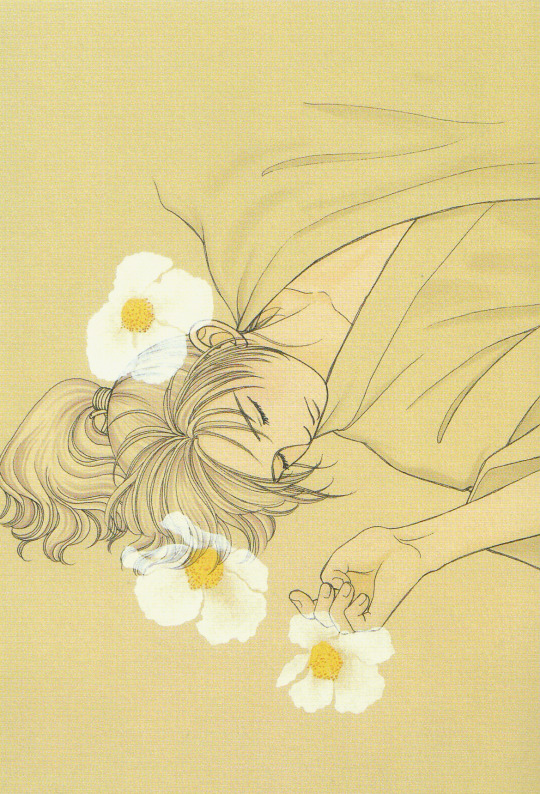

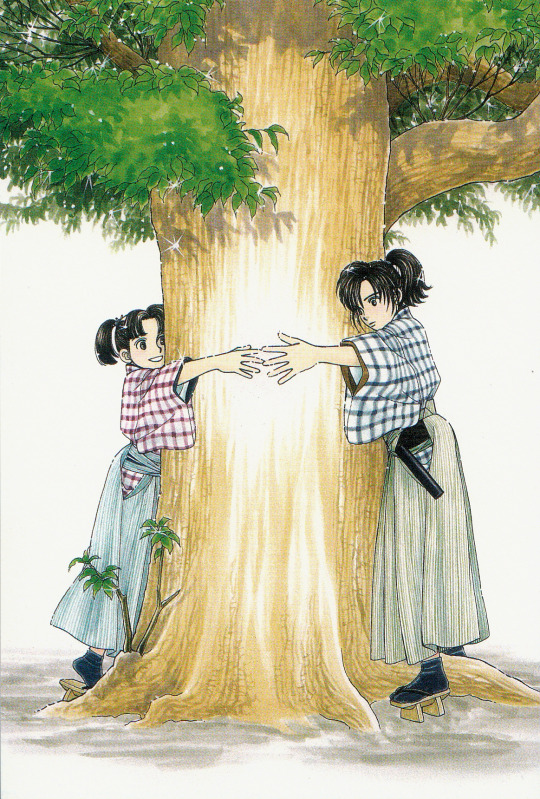
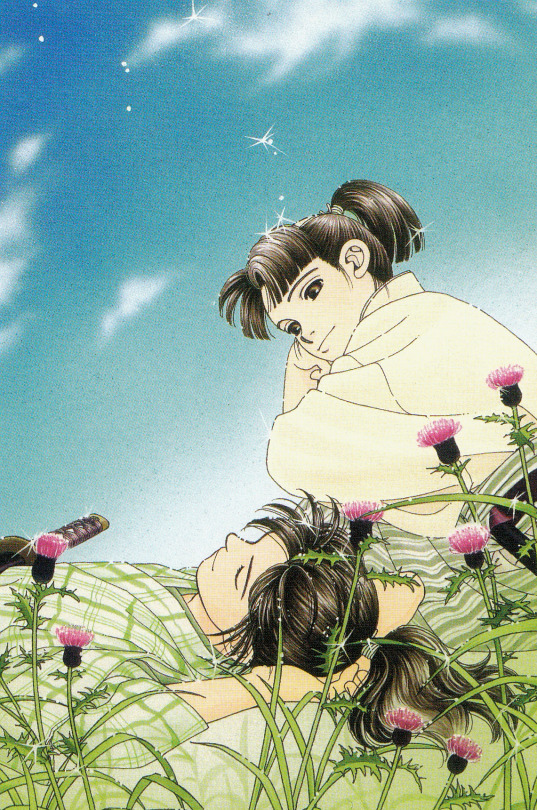

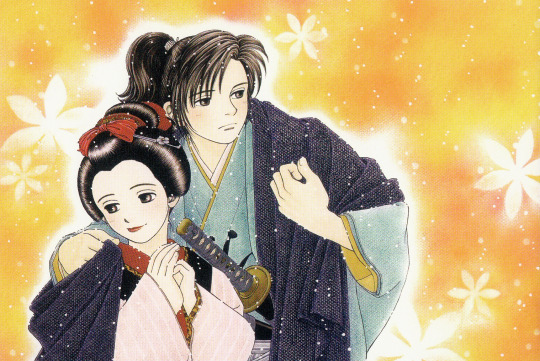
This Kaze Hikaru postcard set came with book #45 (the last book in the series). There's actually 12 cards in the set, but tumblr limits posts to only 10.
#shared#kaze hikaru#watanabe taeko#art book#scans#scanned#other people's art#shinsengumi#okita soji#kamiya seizaburo#tominaga sei
18 notes
·
View notes
Text

I finished the modern!AU image from this request and will now return you to your regularly scheduled Edo period programming.
22 notes
·
View notes
Note
Hello. I hope your health is generally good now. It's great that the dojo is closer now. You also said that... you could try to offer something. I'm... to be honest, I'm very unsure. When you released the softrber, I was very touched by it. A sad ending for Okita. А... could I ask you to draw it in a modern-day setting? A kind of AU, perhaps? When he's not dying slowly alone in a house, but in a hospital, recovering. Waiting to be discharged and eating the sweets Saito brought him.
Thank you for your kind note. 🥰 My health is... well, not great, but also not awful. It's alright, I guess.
I'm glad you enjoyed the Comfortember story, even though it had a sad ending. I've always said I don't do modern AUs, but when I thought about your request, the picture of Soji with a longcat pillow came to mind, and once I have an idea, it can be hard to let go of it. 💦
So I've made a sketch. I will probably finish it but there's so much going on in the background here that it's going to take some time.
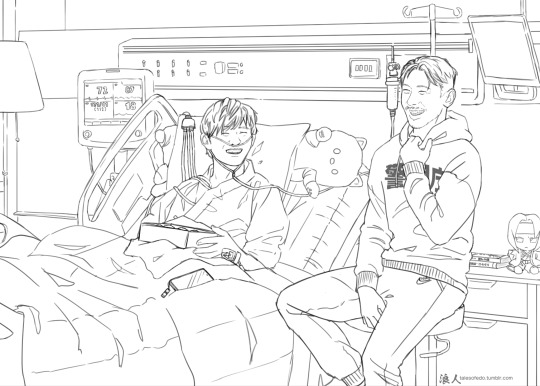
Soji is based on Yamada Ryosuke, who plays Soji in Moeyo Ken, and Saito is based on Odagiri Jo, who plays Saito in the NHK Shinsengumi! series.
By the way, M1koo on AO3 (@sayitcanonlybeme here on Tumblr) is writing an isekai story where Soji and Hijikata end up in modern day and Soji gets to recover. It's only a chapter so far, but you can find it here.
#ask#answered ask#art request#sketch#modern!AU#okita soji#saito hajime#I wonder if I should move this to my main since it's not Edo period
10 notes
·
View notes
Text

12 notes
·
View notes
Note
From what I read about Shinbei, he was from Kagoshima, so it’s assumed that he studied Jigen Ryu. It’s a koryu that specializes kesagiri from a jodan stance aiming to kill an opponent with a single stroke. However there are two one being Yakumaru and the main Jigen Ryu Hyoho. Which one did he train in? It’s rumored he trained under this school but it is not specified which of one
Unfortunately, we don't know with any kind of certainty which sword style Tanaka Shinbei trained in, or which fencing hall or teacher he was a student of.
It's all guesswork.
It's generally assumed that he trained in the Jigen-ryu style, for two reasons: one, he grew up in the Kagoshima castle town where the Jigen-ryu style originated, and two, Jigen-ryu is Satsuma's most famous sword style, so people naturally try to link it to Shinbei.
The Jigen-ryu school in Kagoshima city still exists today. It's now under the 13th generation, Togo Shigekata. I really wish their website had more information about the school's history because currently there's a large historical blank between 1643 and the period following the Meiji restoration.
However, according to the website, it seems the style wasn't taught to "outsiders" at all until after the Meiji restoration. Even female family members of the Togo family weren't allowed into the dojo.
I wonder a bit how likely Shinbei would have been to train there, considering he did not even come from a samurai background.
2 notes
·
View notes
Text

#ronindraws#original art#original characters#sunset#sea#beach#ocean#carrying#I hate painting backgrounds#soft
10 notes
·
View notes
Text

14 notes
·
View notes
Text
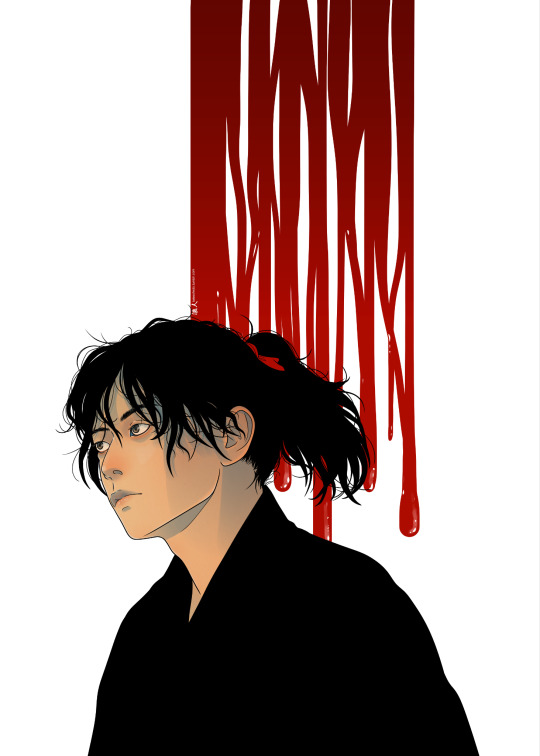
Transparent version under the cut.

17 notes
·
View notes
Text
🙇
I haven't been posting much lately because a new dojo recently opened nearby, and while it's a style I've never done before (Ryukyu Kempo Karate), I'm just excited to have a local option that isn't Brazilian jiu-jitsu. (Absolutely nothing against BJJ, but it's not what I'm looking for.)
Since moving to this area, I've sadly been on my own with swordsmanship practice as there's nothing closer than a 3 hour drive, which just isn't feasible in terms of time or money or safety (especially during our long, snowy winters).
Wanting to continue some kind of formal martial arts training, I took a few years of Taekwondo until, sadly, the instructor moved away, which was definitely frustrating. (Him moving, not me taking Taekwondo. 😅)
After that, I had cancer, and then had to deal with all of the assorted post-cancer health stuff caused by chemotherapy, which made (and often still makes) even simple exercise a challenge, so for a bit, I did very little even to continue practice on my own when it came to martial arts.
Anyway, the new dojo is only 20 minutes from my work and it's a beautiful, big space. It's also a proper dojo, rather than a school gym or a fire hall, so the training space and hours aren't shared with random people, which is a definite bonus for everyone.
This particular style and school are focused on self-improvement and self-defense. The instructors are also aware of and willing to work with my ongoing health stuff, so that I'm feeling both welcome and safe training there.
I'm really excited to have that back in my life.
However, several nights at the dojo after work and then having to get up again early the next morning for work hasn't left me with as much time to create art and write about the Edo period as I'd like, and I haven't found the correct balance in my time quite yet.
I just want you all to know that I'm not going to stop posting, but that it will take me a little while to create a new routine and start posting regularly again.
So please bear with me.
If you have any suggestions for what you'd like me to write or draw about more in the future, please let me know in the comments or via PM. I also have some asks still that I'll eventually get to, I promise!
17 notes
·
View notes
